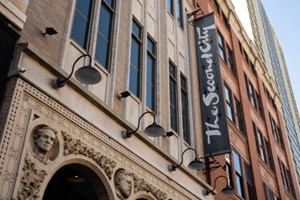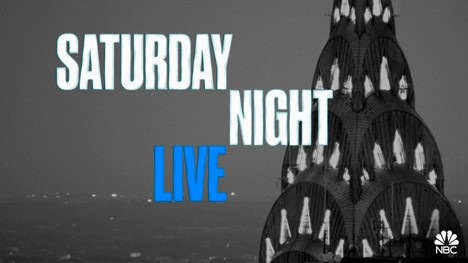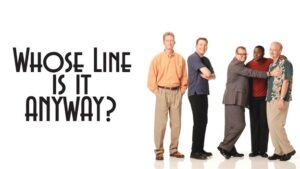As any student of comedy will tell you, perhaps the most challenging yet rewarding type of comedy to practice is improvisational comedy. Not just anyone can successfully work their way through a “yes, and…” without some kind of formal training. It’s with that respect for this great American art form we’re going to dive into improv comedy’s origins, its rise in popular culture, and the lasting mark it’s left on contemporary comedy.
What Is Improv Comedy?
So, what exactly is improv comedy? Improv comedy, or Improvisational theatre, if you want to be fancy, is a dynamic form of live, unscripted comedic performance. Live improv relies on the spontaneous creativity of the performers to create dialogue, characters, and even entire storylines on the spot and in the moment. It’s a favorite craft of quick-witted newsophiles who thrive on tongue-in-cheek quips and spontaneity.
Importance of Improv Comedy in Entertainment
Improv has found a stronghold in the world of entertainment from spot lit comedy clubs to dusty backrooms, and long-running comedy troupes and wildly successful TV shows If you live in or visit one of America’s major cities, there’s likely an embedded improv comedy group available for nightly hilarity services, if you look under the right rock. Improv’s tentacles have tickled audiences in every medium there is and continues to be an important art form.
Brief Overview of Improv Comedy’s History
Like many great American art forms, improv was driven by people passionate about creative expression. For any art form to flourish, it needs a space to evolve without rigid objectives. Improv’s roots trace back to Italy in 391 BC, where it began unstructured. Though Chicago’s comedy clubs are often credited with modern improv’s rise, the story goes deeper.
Early Forms of Improvisation in Theater
Ancient civilizations loved comedy and humor as much as we do now. It was a welcomed release from the hardships of the times and people of all social levels would enjoy time at their local theaters. The most notable early example is Commedia dell’arte, which emerged in 16th-century Italy. Through recurring characters and loose plot outlines, the actors were free to improvise dialogue and incorporate physical comedy where they could. The focus was on quick wit, exaggerated expressions, and engaging the audience. These early improvisational techniques laid the foundation for modern-day improv and collaborative performance.
Influence of Commedia dell’arte
With recurring characters, such as the cunning Harlequin or boastful Captain, commedia relied heavily on improvisation, physical humor, and exaggerated gestures. With a mix of scripted lines and spontaneous dialogue, the actors were given the freedom to engage audiences making for a lively and interactive performance. This approach influenced playwrights like Molière and later, modern-day improv troupes. The groundbreaking humor, improvisation, and character types from commedia can still be seen in contemporary comedy, film, and theater.
The Birth of Improv Comedy
Coming into modern times where live theater was only one option for mass entertainment, there was an evolution that found ways to build on the classic entertainment medium. Let’s explore some of the people and places integral to forming the improv we know and love today.
 Viola Spolin & Improv Theater Games
Viola Spolin & Improv Theater Games
Before Viola Spolin, improv was as we described above, more of a loose outline meant to grant more freedom to performers. But Viola brought in the concept of theater games to help performers explore their creativity and expand their imaginations.
Born in Chicago and later becoming an accomplished actress, educator, director, author, Viola literally wrote the book on modern improv “Improvisation for the Theater”. Later, as Director of Workshops at The Second City, she developed a comprehensive approach to actor training. Each game or exercise presents a specific focus or problem for the group to solve together, allowing players to learn through the experience of play. Spolin emphasized that “Everyone can act. Everyone can improvise. Anyone who wants to can participate in theater and learn to become stage-worthy. We learn through experience and by experiencing, and no one truly teaches anyone anything. ‘Talent’ or ‘lack of talent’ plays only a minor role.”
Her son and protege director, Paul Sills, went on to co-found seminal Chicago improv institutions including Playwrights Theatre Club, The Second City, and created Story Theater. He also co-founded The Compass Players, which is the improv troupe often credited with originating modern improv in the city of Chicago.
The Second City
Perhaps the most famous (and infamous) improv Chicago theater is The Second City. Just up the road from The HOME Comedy Theater, this Chicago institution has produced a litany of talented comedians, actors, writers, producers, and directors. Of the many troupes which originated and cycled through Chicago, The Second City slowly became the epicenter of improv talent in America.

 ImprovOlympic
ImprovOlympic
Now known as “The iO Theater”, the ImprovOlympic is considered by many the mecca of “longform” improvisation and although never really mentioned by the media, eventually became one of the most sought-after places to study improvisation and a hidden gem to scout for talent.
Using theater games created by Viola Spolin, David Shepard created the ImprovOlympic to put up competing improv teams against each other in friendly and funny competitions. At the time, performances were being held at The Players Workshop in Chicago, where Charna Halpern was an improv student and assistant to David Sheperd. She later would become the producer of the competitions, and eventually took over operations and ownership of the ImprovOlympic name.
Charna believed that improv was capable of more than the short games and competition-style shows that dominated the scene through the 1970s. It was then that she met legendary Second City director and improv luminary, Del Close.
She approached Del about teaching classes at her theater and he agreed. With Del leading the way, the true nature and mission of the ImprovOlympic began to take place. With Del serving as the mentor and Charna the guide, “longform improvisation” was born and the two would eventually help change the face of improvisational comedy.
 Annoyance Theatre
Annoyance Theatre
Founded by iO alum Mick Napier, The Annoyance Theatre rapidly became one of the most popular and beloved improv theaters in Chicago due to it’s unique, fun, and loose approach to teaching and performing improv. Led by the brilliance of Mick, the theater quickly became one of the top three improv theaters in Chicago (alongside Second City and iO) to study. perform, and scout talent.
Chicago Improv Theater Community
Perhaps inspired by the Annoyance, more and more theaters with different styles and approaches to improvisation eventually began to pop up all around the city in the late 90’s and early 2000’s to form one of the biggest and most supportive improv communities in the country. Eventually, thanks to places like Comedysportz, The Playground, and CIC Theater, to name a few, not being selected to perform on stages like Second City or iO wasn’t such a huge blow to young students anymore because they had plenty of choices to call home that fit their style of performance.
The pandemic changed the landscape of improv (and theater in general) in Chicago and sadly brought the closing of many of the smaller theaters in Chicago. However, now led by places like Logan Square Improv (LSI), Bughouse Theater, CIC, and The Home Comedy Theater, the Chicago improv community is now going though a wonderful new resurgence.
Chicago Improv Alumni & Saturday Night Live
In the mid-1970s there wasn’t much national exposure for improv outside of the smoke-filled college halls and a few theaters dotted in larger North-American cities. This changed when Saturday Night Live debuted on NBC in 1975 as a late night sketch comedy show. While the scenes were scripted, the “not ready for primetime players” were mostly pulled directly from Chicago’s Second City.

1970’s
The original cast featured talents such as Chevy Chase, Dan Aykroyd, Jane Curtain, Garret Morris, and John Belushi. Later that decade came the incomparable Bill Murray who is credited with advancing the show to the next level with his unique wit and proclivity for comedic timing.
1980’s
The 1980’s saw talents like Eddie Murphy, Julia Louis-Dreyfus, Billy Crystal, Christopher Guest, and Damon Wayans. This is the era where the show really began to find its footing with recurring sketches like Martin Short’s Ed Grimley, Kevin Nealon and Dana Carvey as Hans and Franz, and Dana Carvey as the Church Lady.
1990’s
Much lauded as the modern Golden era of SNL, the 1990s spawned not only present day superstars, but a line of movie spin offs based on SNL sketches. Classic comedies like “Wayne’s World”, “Coneheads”, and “A Night At The Roxbury“ all came from characters created by this era of cast members.
This pivotal era gave us the likes of Adam Sandler, Chris Farley, Mike Meyers, Chris Rock, Janeane Garofalo, Tim Meadows, Will Ferrel, Molly Shannon, Horatio Sanz, Ana Gasteyer, Tracy Morgan, and Jimmy Fallon.
This is also the era where players like Chris Farley and Tim Meadows, who were discovered at Second City, had also cut their teeth in other Chicago improv theaters before arriving at Second City.
2000’s
So far, the 2000’s (to present) have featured amazing players like Tina Fey (who eventually became head writer), Amy Poehler, Fred Armisen, Maya Rudolph, Will Forte, Kristen Wiig, Bill Hader, Rachel Dratch, Jason Sudeikis, Vanessa Bayer, Seth Meyers, Andy Samberg, Cecily Strong, Chris Redd, Aidy Bryant, Alex Moffat, Tim Robinson, and Kenan Thompson, who is the longest tenured cast member in SNL’s history.
This is the era that perhaps had the most Chicago improv connections in their cast and writing staff with connections to several improv theater’s in the city before arriving at Second City.
Development of Long-Form Improv
Trailblazers like the aforementioned Viola Spolin helped to develop the conceptual aspects of modern improv through short bursts of action and games. Though wildly entertaining, these improvised sketches played more like a patchwork of themes that often had no direct connection to one another. It wasn’t until 1967 when long-form improv performances began to take shape, primarily in and around San Francisco and the West Coast of the U.S.
Influence of Del Close and “The Harold”
To really understand the origins of long-form improv comedy, we must attribute the influential genius of Del Close , who reimagined improv as an art unto itself, and his popular signature improv piece, “The Harold”.
Widely credited to have been created by Del Close, The Harold is a performance structure used in “longform” improvisational theater where characters and themes are introduced and then recur in a series of interconnected scenes. Before The Harold, improv was more loosely based on theater games and audience suggestions.
In its most basic form, The Harold ‘structure’ could be described as having the entire group come together at the top of the show to explore a single audience suggestion in various ways in order to comes up with a general “theme” of the show in what is referred to as “The Opening”.
This is then followed by 3 improvised scenes that contain characters and storylines inspired by the overall theme of the show that was generated in the “Opening”. All three of these scenes together are one “performance segment” of the show, which in improv lingo are called “beats”. In this case, all three scenes are considered the “first beat” of the Harold.
After those three scenes (“first beat”), the group comes together again on stage to continue to explore the theme of the show in various ways, like a mini-performance within the show. Because this is always something fun to do as a group, like playing a game with your friends, it was aptly called a “Group Game” in the Harold.
A Harold typically includes three “beats” and two “group games”. In the second and third “beats”, scenes and elements from earlier should begin to connect and intersect and culminate in a series of callbacks to earlier characters or storylines. Believe us, it’s much more enjoyable to see it in a live show than to read about it here.

*Art by Dyna Moe.
While rooted in California, the Harold became a Chicago improv scene staple once Close took up residency at ImprovOlympic after leaving Second City. As the performance piece’s reputation grew, it was slowly adopted into improv troupes all around the world from The Court Jestures in Christchurch, New Zealand, to London’s The Comedy Store Players
Chicago Improv Comedy on Television and Film
Improv performers -and Chicago improv performers in particular, have given us some of the most renowned television and movie comedians, performers, directors, writers, and producers of the last century. Names like Bill Murray, Gilda Radner, John Belushi, Tina Fey, Adam McKay, Chris Farley, Amy Poehler, Tim Meadows, Jon Favreau, Seth Meyers, and Stephen Colbert all got their start in Chicago’s improv comedy scene. The bounty of improv’s influence in TV, films, and many aspects of today’s media and entertainment are plentiful.
 Impact of “Whose Line Is It Anyway?”
Impact of “Whose Line Is It Anyway?”
Though its origins are in the United Kingdom, the popular improv comedy TV show “Whose Line Is It Anyway?” had a profound impact on bringing the art of improv into living rooms in America and around the world with over 30 international adaptations. The show features up to four performers who partake in improv games. Hosted by Drew Carey, who occasionally partakes in the games, this show helped to further the careers of improv alumnus Greg Proops, Wayne Brady, Ryan Stiles, and Colin Mochrie.
The impact of Whose Line has been perhaps the most profound example of the art of improv being introduced to the masses. As a result, it had an indelible impact on improv class and workshop enrollment across the country in the past 25+ years.
Improv Comedy Today
Improv comedy today has evolved into a global phenomenon, with thriving scenes in cities beyond Chicago all around the world. Popularized by TV shows like Whose Line Is It Anyway? and Saturday Night Live, improv continues to shape modern comedy from local theaters to international festivals and foster creativity, spontaneity, and community among performers and audiences alike.
Growth of Improv Comedy Theaters and Schools
Improv comedy theaters and schools have experienced significant growth over the past few decades, expanding from niche communities into mainstream entertainment hubs. Institutions like The Second City, iO Theater, and Upright Citizens Brigade have become training grounds for aspiring comedians, actors, and writers.
Inspired by the people they worked with and the work and reputation they helped create at those theaters, the artistic team at The HOME Comedy Theater set out to create a new home for longform improv that could help make improv more accessible by fostering a diverse, inclusive community of performers and enthusiasts.

Looking Ahead: The Future of Improv Comedy
The future of improv comedy is promising, with more emphasis on diversity, inclusion, and innovative formats. As digital platforms expand, virtual and hybrid performances are gaining traction, giving performers around the world opportunities for more collaboration. Improv’s adaptability ensures it will continue to evolve, connecting communities and pushing creative boundaries worldwide.
Contact us with any questions about The Home Comedy Theater classes, shows, workshops, writing courses, or anything else!
